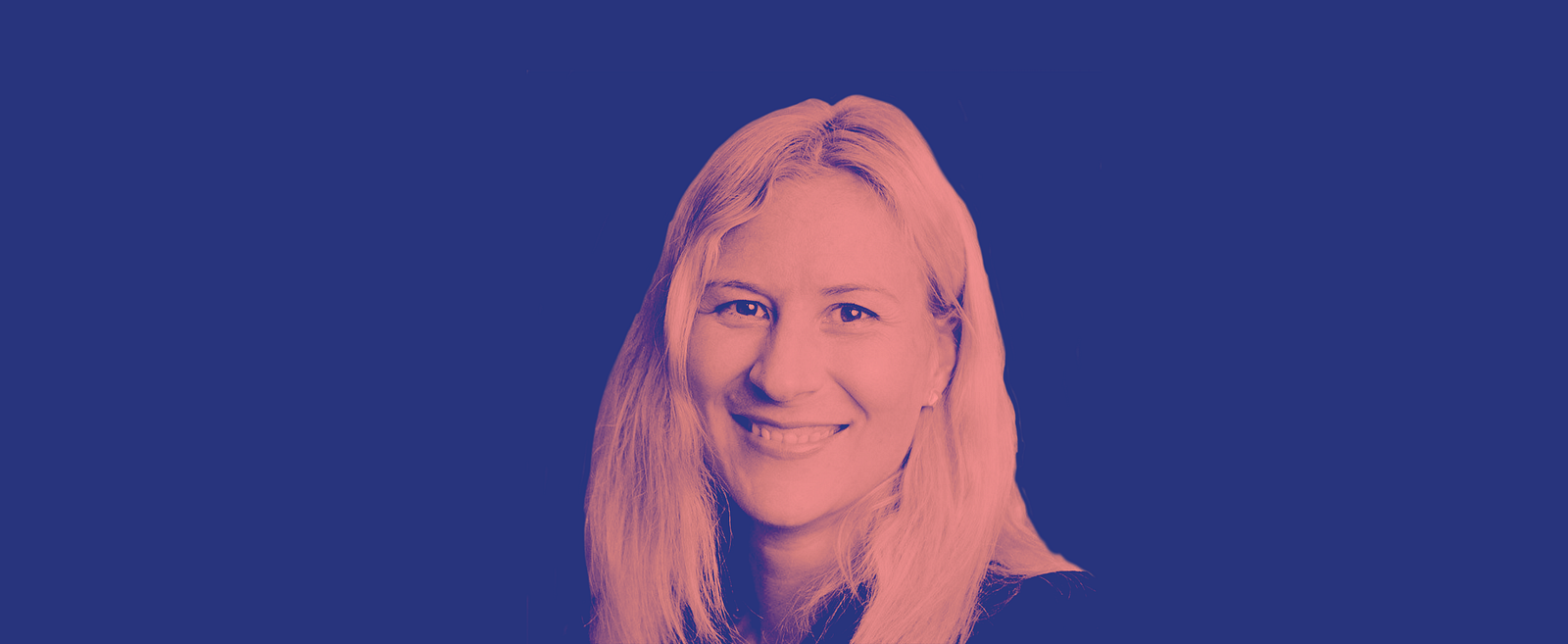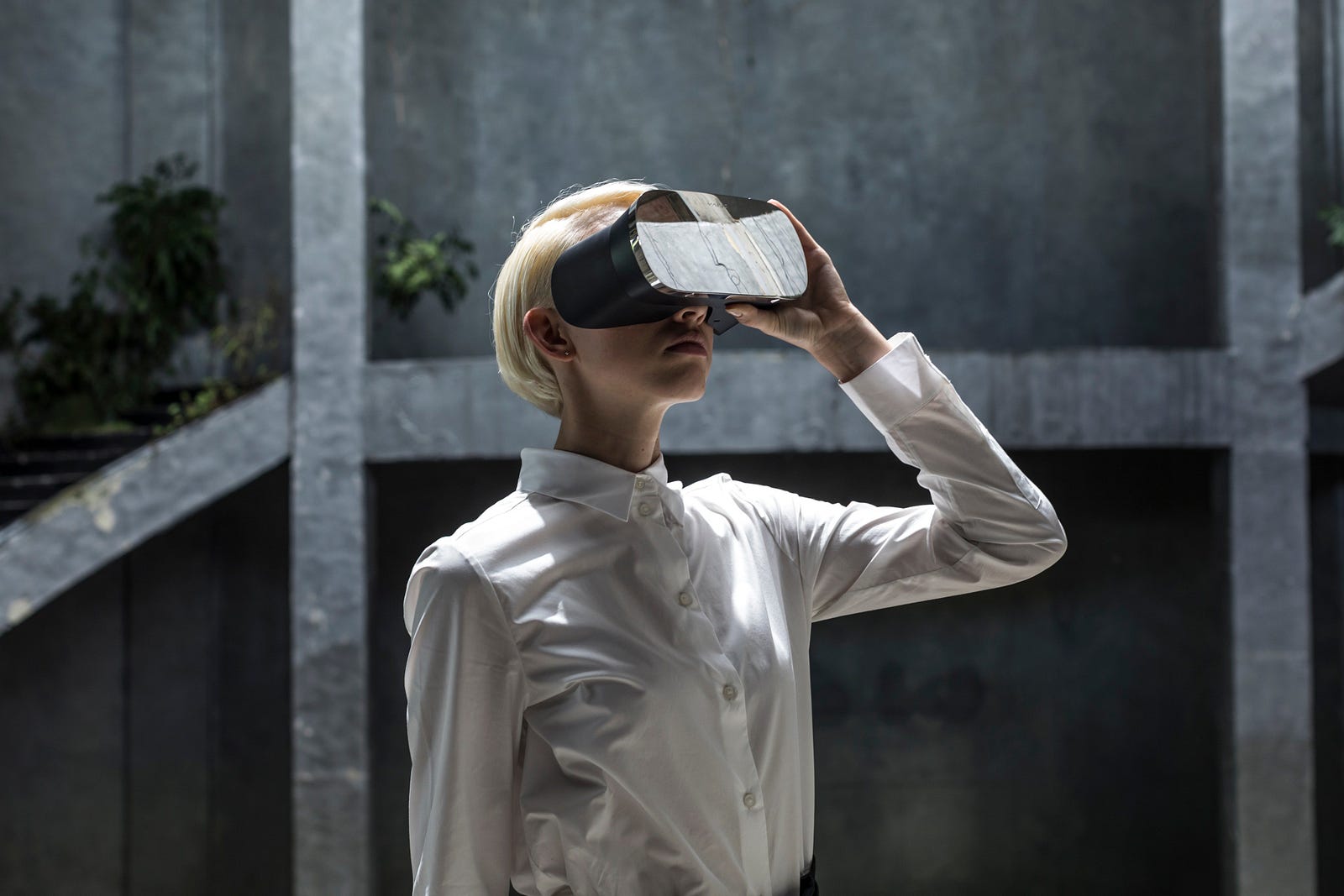Immersive interview with Krista Jäntti


Immersive interview with Krista Jäntti
You are a Lead UX Designer at Varjo. Can you give a short introduction to what it is?
We are a fast-growing startup (a bit over 70 people) so you get to do a lot of different design work here at Varjo, which is nice. I do both research work and the actual hands-on design, I implement my findings into UI wireframes.
I love to do research work, I search for emerging trends on the internet how VR and XR technologies are going to change the future of work, I interview people (mostly our partners) who already use VR, I try every new XR gadget I can find, and I spend a lot of time in VR. I sort of tear down different VR apps and analyse why some things work and feel right and then again why some don’t work and learn from those experiences.
Then there is the actual hands-on work, which I divide between what happens inside the headset and outside the headset, so to 2D and 3D design work. Even when I divide them this way they need to talk the same design language.
Our product is the world’s first human-eye resolution headset with a software platform — so there is a lot of design work to do. I have been mainly responsible for creating the setup experience and the desktop app (we make a lot of co-work so I am not working alone but with a team). I can’t tell you much about the 3D work but as I said, we are working on a software VR platform with a new team now.

How does the headset look like? Does it have this nice gloss material on the front side as on some renders?


We will reveal the specifics of our design when we launch our first product, but I can tell that it will be amazing and stands out from every other headset on the market in terms of user experience, comfortability and design. The product is made for high-end professionals, so we have made no compromises.
Who else is in your design team?
Altogether we are 7 designers here. We all have nice titles (chief, principal, lead designer etc.) but those titles are more for the business cards. We all have areas where we have the main responsibilities, but we share and contribute a lot to what we do inside our team. Before Varjo, I didn’t know that much about industrial design. Now I am learning from our industrial designers how the visuals, materials, mechanics, and ergonomics form a physical product.
Are you going to develop some demos in advance?
We have already made some demos for VR conference visitors and early access partners, both in XR and VR, to showcase the capabilities of our technology. Our product will be launched by the end of this year and it will include access to demo content to showcase the game-changing effect of human-eye resolution.
I’m looking forward to try it. Is it required to create unique content for Varjo headset, or can existing experiences be easily adapted?
Existing content can be easily adapted for Unity or Unreal Engine with Varjo plugins. We also support custom engines through our SDK. As our device has an extremely high resolution compared to other headsets, you might want to increase your polygon count and texture fidelity in your designs.
How does your design process usually work?
It depends on whether it is 2D or 3D design work. I do background research work, I search for use cases and I validate them with real people. If I do something which no one hasn’t done before (which is often the case in VR) I validate my ideas with my colleagues.
After a validated idea comes sketching work. I still use a lot of pen and paper — somehow my brain works best with a pen in a hand. I use my paper sketches to get the first feedback from colleagues and developers. Paper is cheap so it’s quick and easy to change or even abandon your ideas on paper sketches. After paper sketches come digital tools, in our case Adobe XD or Unity 3D or even both.
Any UI you make in VR is much more demanding than 2D work — you are dealing with so many variables it’s sometimes hard to stay on track with everything. You have to do a lot of jumping into VR and then back to the real world to get things feeling right. The design language of VR is still forming, so there are still many things to be discovered.
2D design work is much more familiar to me, you have tons of good design conventions and sketching tools. You can just choose from familiar patterns and you know they will work. But it’s the challenges which make VR design fun! You can interact in VR with your hands, feet, controllers, eyes, headset, voice or even with your brain. VR design is really a work in progress.
On the internet, people are talking mostly about training as a primary use case for such a hardware. What is your favorite use case?
VR meetings. The environmental effect of flying is devastating. 8 million people fly on daily basis. We all know that we can’t keep on traveling that way. We could replace a huge percentage of business travel with VR meetings and reduce the cost of flying and jet lags. VR meetings are fun and social, and our device will enable a whole new level of realism for interaction.

What tools are you using for designing?
Paper, pen, Adobe XD, Unity. I am still a beginner with Unity so there is a lot to learn. Our design team is a mixed set of Windows and OSX users so Sketch is not an option, unfortunately. OSX is not a very VR friendly platform for designers.
I have the same struggle with MacBook for design vs Alienware for VR. What hardware do you use daily?
I am a fan of different wearables. At the moment I am wearing four different wearable devices: Spire Health tag, new Oura ring, Moodmetric electrodermal activity ring, and Bellabeat Leaf Urban necklace. I test them in different environments (for example an amusement park is a place where you can really mess with the sensors) and I often report the results for the developers if I find something weird. I always sign for as a beta-tester for new wearable products!
I use Here One smart earbuds even though the company Doppler Labs has closed its doors. It’s a pity, their product where you can make modifications of the volume of the real world (augmented hearing experience) is really good. The battery life of the product is terrible, but it is still perfect for the gym sessions.
I am in the waiting line for the Sense stone (tap-and-speak jewelry, a Kickstarter project which looks like it’s coming to reality by the end of this year). Lastly, of course, I use different VR hardware every day. My phone is so obvious that I almost forgot to mention that.
How closely are you working with developers and how you deliver your design ideas?
Very closely. I learned from my previous job that the best way to make a successful product is to co-work as much as you can with developers. I need to understand the technical restrictions of what we can have and what is the best thing we can deliver in this time scope. Return on investment in time is crucial for startups. There’s no point in designing something up-front which no one can implement.
I go through my design sketches or even just ideas at the very early stage and the final deliverable is a digital proto, in the case of 2D a clickable proto and in the case of 3D proto, I need to sit close to developers which I do at the moment we speak.
How are you getting requirement from stakeholders?
The usual way: a lot of meetings and Skype calls.
How do you stay in touch with potential users? How difficult is to get feedback in your situation?
We have an early access program with companies from our key industry verticals, so we can get feedback from our users and perfect the technology together with them. We have learned a lot from them this way. We have focused on companies in the fields of AEC, training and simulation, and industrial and automotive design.

You worked at Reaktor almost from the founding of the company. You started as a developer and ended up as a design director. How this experience has affected your VR design career?
I have worn many “hats” during my career, so it gives you a good perspective on the teamwork, tools, and processes. I can understand the whole process from many points of view. It’s not just getting the requirements, doing the design work and coding, it’s how you learn to make the team breathe the same air. We are all humans who have restrictions and desires, and if you learn to listen to those, you can make the team do wonders.
You are a Master of Science in microbiology, biochemistry, and computer science. How did you switch to design? What experience from this period helped you in design?
Good question! I have always had the need to understand how everything works from human cells to computers. Curiosity has played a big role in my life and one thing has led to another. When something feels interesting I want to learn more of it and so I follow that path.
Research work is quite similar whether it is cell biologist or UX research work. You search for patterns and anomalies, analyze them and try to find cause and effect relations. So analytical skills I developed during my years in the lab have helped me in the job I do today.
What are the most required skills for guys who want to start designing for VR?
Open mind and curiosity, understanding of the human factors, how human vision, physiology, and brain works. In VR, the human factors always come first, user interface design comes second. Background in 3D helps a lot. You can have a background in filmmaking, industrial design, game development, UX/UI design, and all those backgrounds can be useful in VR design.
If you could, what career advice would you offer to younger yourself?
Don’t be afraid to start a career in technology because of your gender.
With whom from VR/AR field (or not) would you like to have a beer, and why?
Can I pick three? I’d like to talk to Voices of VR Kent Bye because he has such a wide perspective on what’s happening in the field of VR/AR. Secondly, Jessica Outlaw who knows so much about social experiences in VR and she’s a researcher herself, as well as Naomi Assaraf, who is a futurist and I heard she likes kickboxing too.
Is there anything else that you wanted to talk about?
Still, haven’t passed an expert level on Beat Saber!
This is not the end of the world. I’m sure you will do it.Thank you for sharing your experience!
Thank you!
